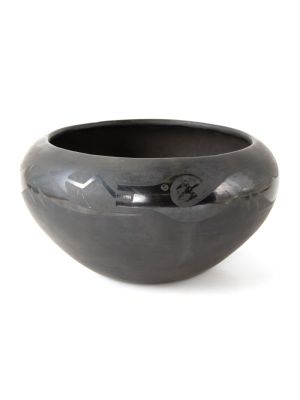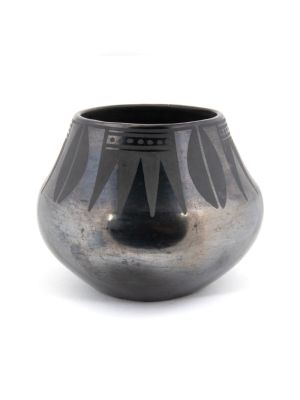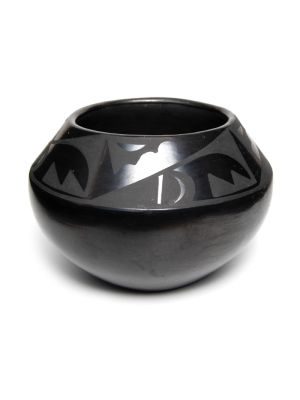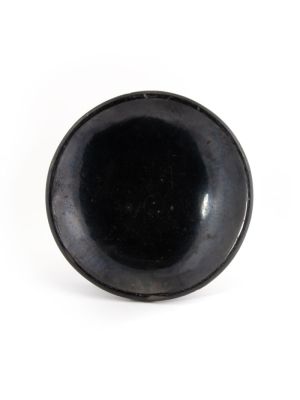Maria Martinez
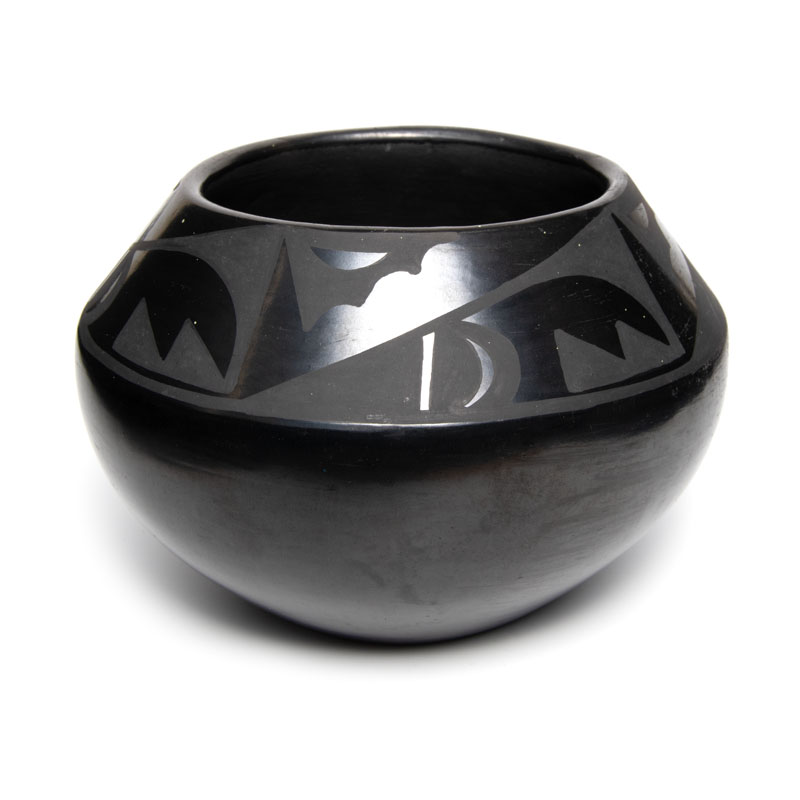

Born 1887
San Ildefonso (New Mexico)
Medium: Pottery
Maria Martinez was born Maria Montoya in 1887/89 and is recognized as one of the most famous Pueblo potters of the 20th Century. She learned the art of pottery making from her aunt Nicolasa as a child and was considered an accomplished potter by her teens. She married Julian Martinez (1897- 1943) in 1904. Originally, Maria made pots and Julian decorated them in the contemporary polychrome style. They demonstrated this technique at the 1904 World's Fair in St Louis, where they sold their pottery for a dollar a pot. This was their first exposure to a broad audience of collectors. In 1907, Julian was hired to help with archaeological excavations on the nearby Pajarito Plateau. Among the polychrome ware discovered were also black ware shards, which Maria saw in 1908 and set out to re-create. By 1918, through trial and error and much experimentation, they perfected a technique of black-on-black pottery where the surface design was separated by a matte and polished surface. Maria made the pots and Julian did the decoration.
From 1925 until Julian's death in 1943, they signed the work "Marie + Julian". After Julian's death, Maria's daughter in law Santana took over the role of decorating and the work she and Marie produced together between 1943-56 was signed "Maria + Santana". In 1956, Maria's son Popovi Da began working with her and by about 1959, they were signing their work "Maria + Popovi" (or "Maria + Poveka"). Around this time, Maria finally began using her name rather than "Marie".
Throughout her life, Maria Martinez gave her time and talent to teach younger artists, promote her craft and educate the world about this time-honored tradition. She changed the course of Pueblo pottery and produced a talented family of potters who learned from her and continue to carry on her legacy. Her work can be found in the collection of the Museum of Fine Arts, the Cleveland Museum of Art, the National Museum of Women in the Arts, the Philbrook Museum of Art, and at the Smithsonian American Art Museum.
